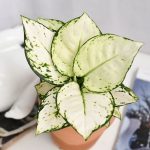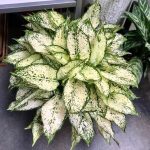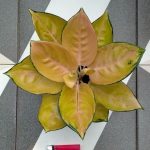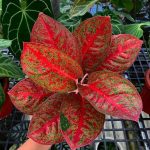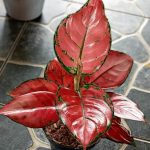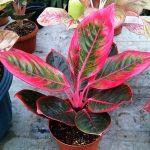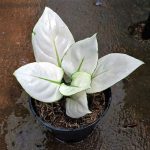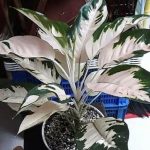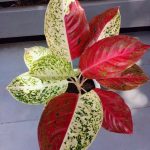Aglaonema plants are low-maintenance foliage and flowering indoor plants that are perfect for novice growers.
What Is Aglaonema?
Aglaonema (Aglaonema commutatum) is an herbaceous perennial native to Asia that belongs to the Araceae family of plants—the same family as several other popular houseplants, such as philodendrons and monsteras. This popular houseplant goes by several common names, including Chinese evergreen plant, Philippine evergreen, and poison dart plant. They have large, glossy, dark green leaves that grow on short stems. They reach a mature height of one to two feet tall. Depending on the species, older plants produce flowers in the spring or summer.
5 Common Aglaonema Varieties
Aglaonema has several popular cultivars. Level up your houseplant game with one of these cultivated varieties.
- 1. Aglaonema ‘Silver Bay’: This is one of the most common cultivars of aglaonema—for good reason. These beautiful, silver-green foliage plants are easy to grow and care for and will add a fresh pop of greenery to any spot in the house.
- 2. Aglaonema ‘Silver Queen’: This cultivar has long, slender leaves that are beautifully striped with silver and various shades of green.
- 3. Aglaonema ‘Siam Aurora Red’: This red aglaonema cultivar sports beautiful yellow and light green variegated leaves and stunning bright pink veins.
- 4. Aglaonema ‘Emerald Beauty’: This cultivar has tall, slender stems and narrow, oval-shaped leaves. Its foliage is dark green with wisps of silvers.
- 5. Aglaonema ‘Pink Dalmatian’: This Chinese evergreen cultivar has deep green leaves and bright pink speckles.
How to Grow and Care for Aglaonema
Aglaonema plants are low-maintenance indoor plants. Simply follow these easy plant care guidelines.
- 1. Plant aglaonema in well-draining potting soil. Any high-quality, well-drained potting soil or potting mix will do the trick. For an even higher drainage capacity, try mixing perlite into your soil before planting.
- 2. Place aglaonema in bright indirect light. Aglaonema will tolerate low-light conditions, but their leaf variegation may fade if they’re in the shade for too long. For thriving aglaonema plants with vibrant, variegated leaves, place them in bright indirect light. To avoid scorched or discolored leaves, make sure to keep them away from direct sunlight.
- 3. Let the top inch of soil dry out between waterings. Water your aglaonema plant when the top inch of soil is dry. The leaves will begin to wilt when the plant is thirsty. Keep watering the plant until water seeps out from the pot’s drainage holes, but avoid overwatering the plant as this can cause root rot or yellowing leaves. If water pools on the surface of the soil after watering, tip it out.
- 4. Keep temperatures moderate. Aglaonema plants grow best between sixty and eighty degrees Fahrenheit with high levels of humidity similar to tropical environments. While these plants flourish in high humidity, aglaonema houseplants tolerate most humidity levels.
- 5. Aglaonema plants benefit from occasional repotting. If your aglaonema plant is drooping no matter how often you water it, that’s a sign it has become root-bound. Select a new container that is a couple of inches wider than the current pot, and re-pot the plant once its growing season begins in the spring.
- 6. Use liquid houseplant fertilizer occasionally. Aglaonema plants can thrive without fertilizer, but fertilizing once a month during the spring and summer growing season will help maximize their growth.
- 7. Watch out for mealybug infestations. Mealybugs are small, white insects that feed on aglaonema plant leaves and leave behind a powdery wax residue. If you spot signs of a mealybug infestation, treat your aglaonema plant with insecticidal soap, neem oil, or a cotton swab soaked in rubbing alcohol.
- 8. Propagate aglaonema plants. You can either prune or use propagation methods to maintain the size of your plant. Replanting stem cuttings is the best method for propagating aglaonema plants. Simply take your mother plant and cut off a stem that’s several inches long. Place the cut stem into a container of water. After a couple of weeks, the cutting should begin to root in the water. Once the new roots are about three inches long, transplant your new plant into a container with potting soil.
Aglaonema Toxicity Tips
Aglaonema plants contain calcium oxalate, a source of toxicity that can be harmful if ingested. If you have curious cats or dogs, place your aglaonema plant on a shelf or tabletop where they won’t be able to reach it.

